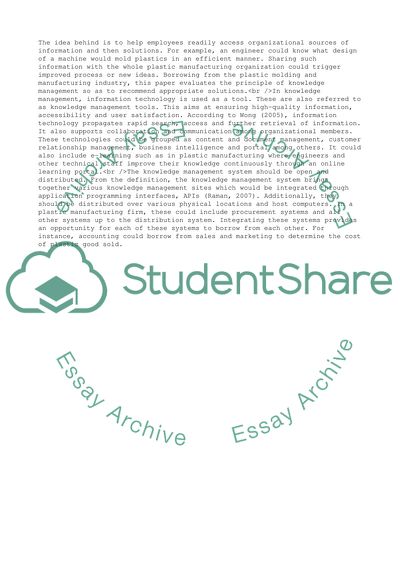Cite this document
(Knowledge Management in Plastic Molding and Manufacturing Industry Essay, n.d.)
Knowledge Management in Plastic Molding and Manufacturing Industry Essay. https://studentshare.org/management/1815780-organizational-communication
Knowledge Management in Plastic Molding and Manufacturing Industry Essay. https://studentshare.org/management/1815780-organizational-communication
(Knowledge Management in Plastic Molding and Manufacturing Industry Essay)
Knowledge Management in Plastic Molding and Manufacturing Industry Essay. https://studentshare.org/management/1815780-organizational-communication.
Knowledge Management in Plastic Molding and Manufacturing Industry Essay. https://studentshare.org/management/1815780-organizational-communication.
“Knowledge Management in Plastic Molding and Manufacturing Industry Essay”. https://studentshare.org/management/1815780-organizational-communication.


